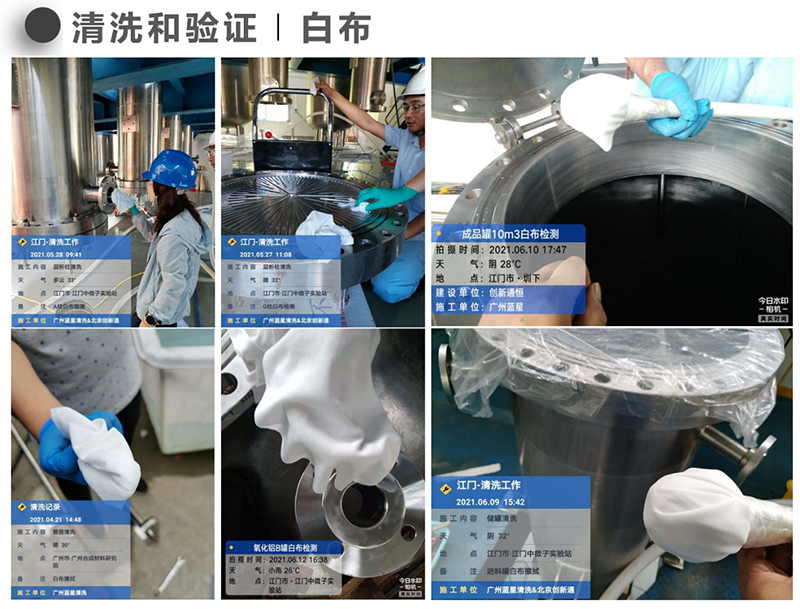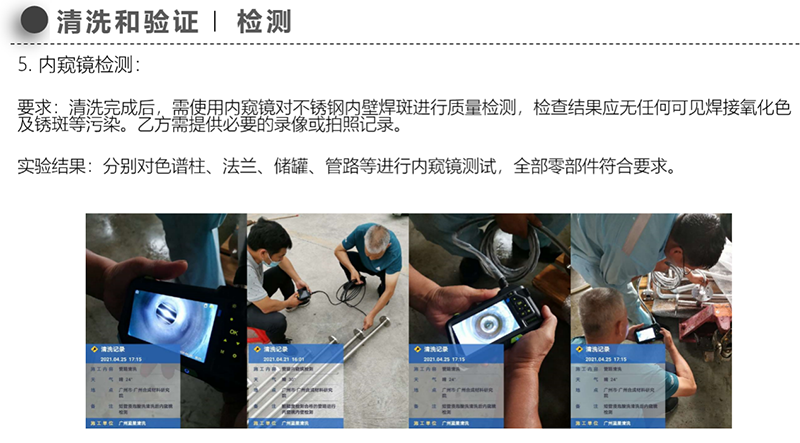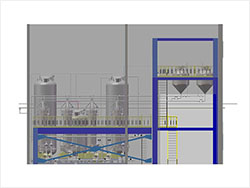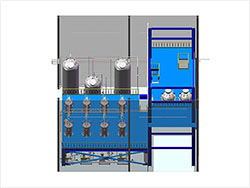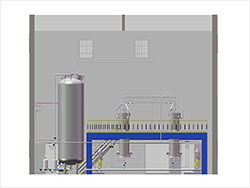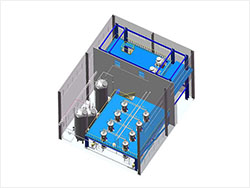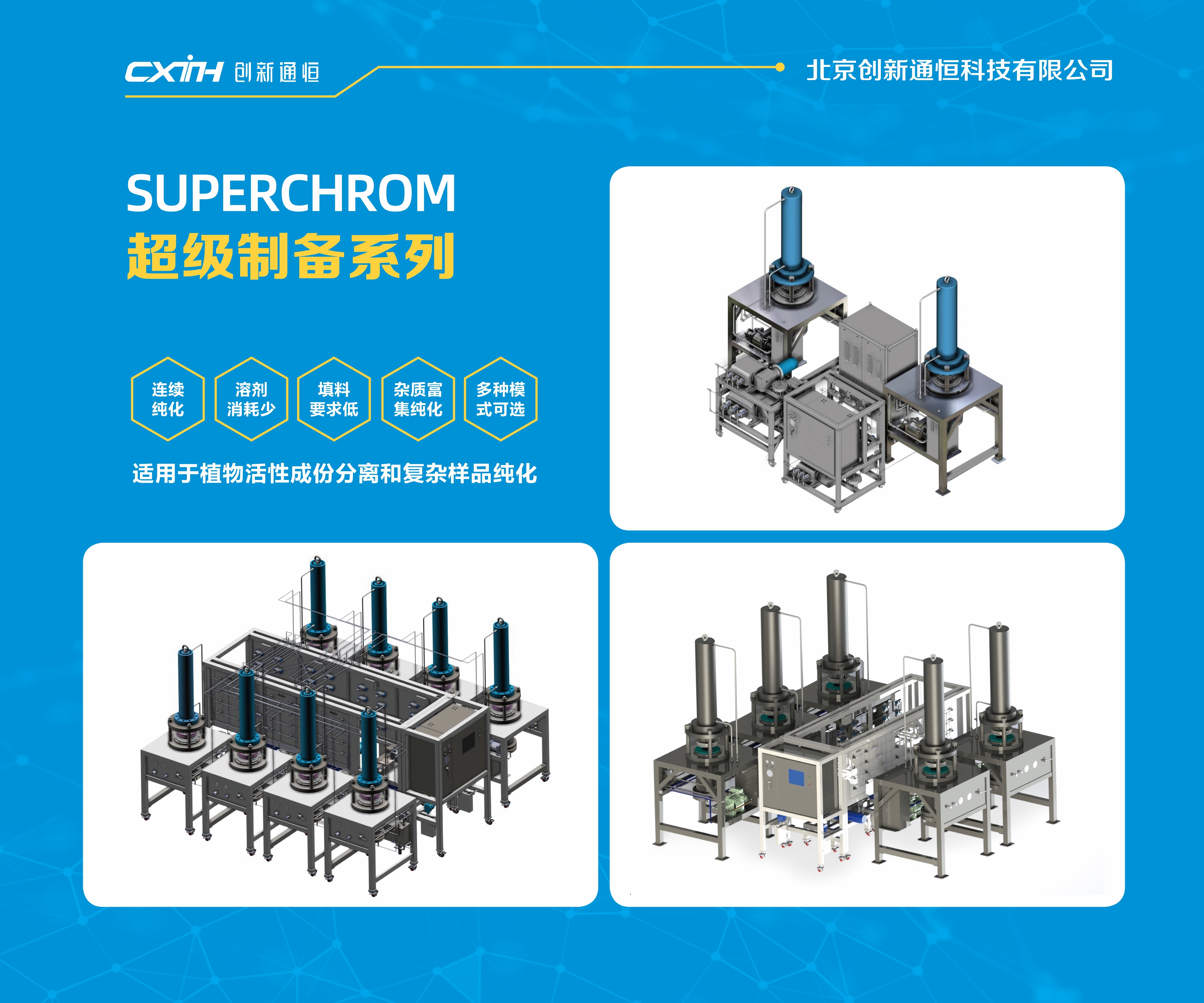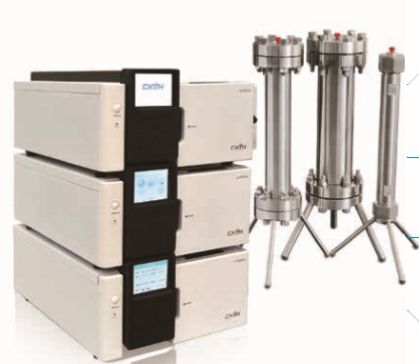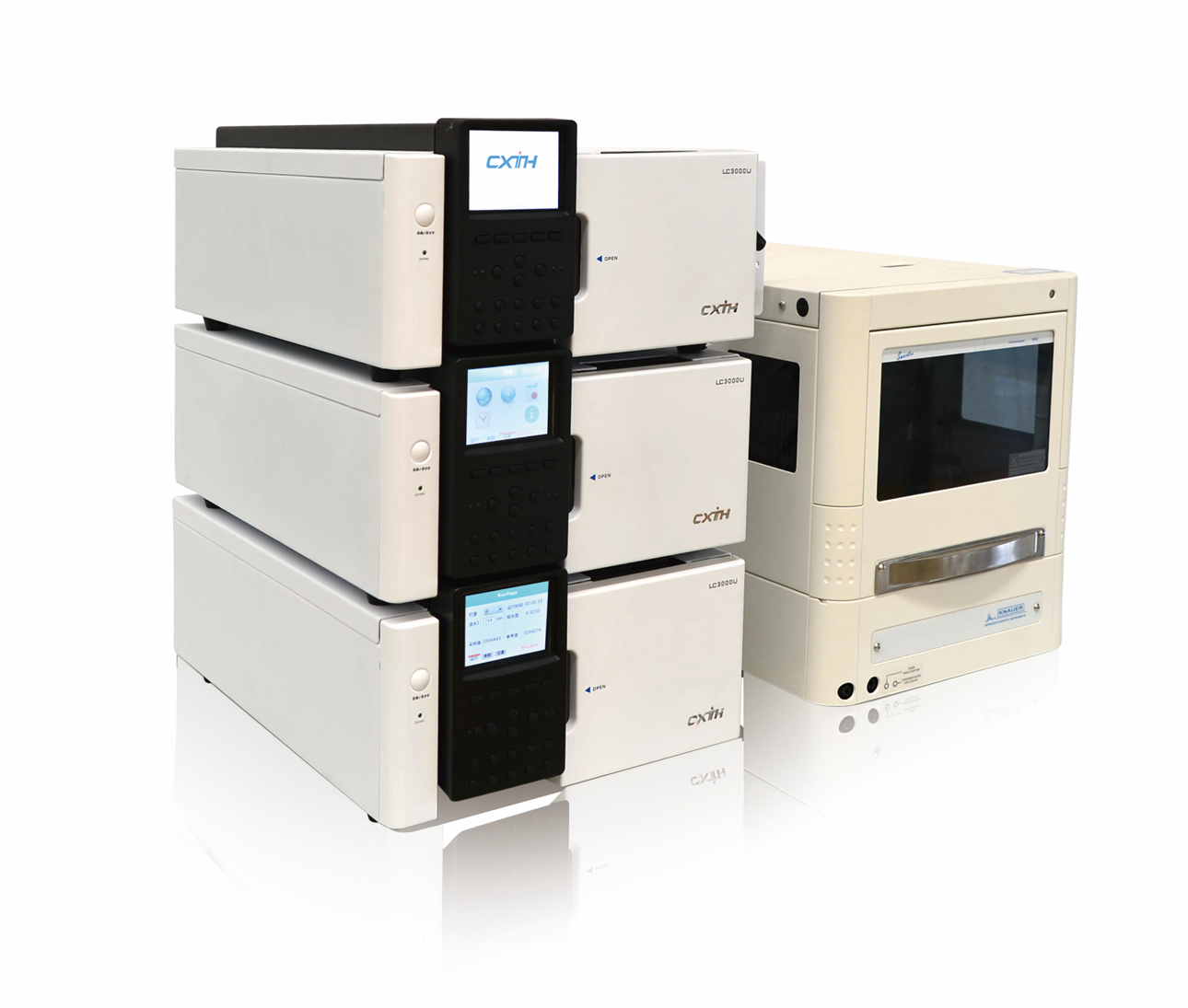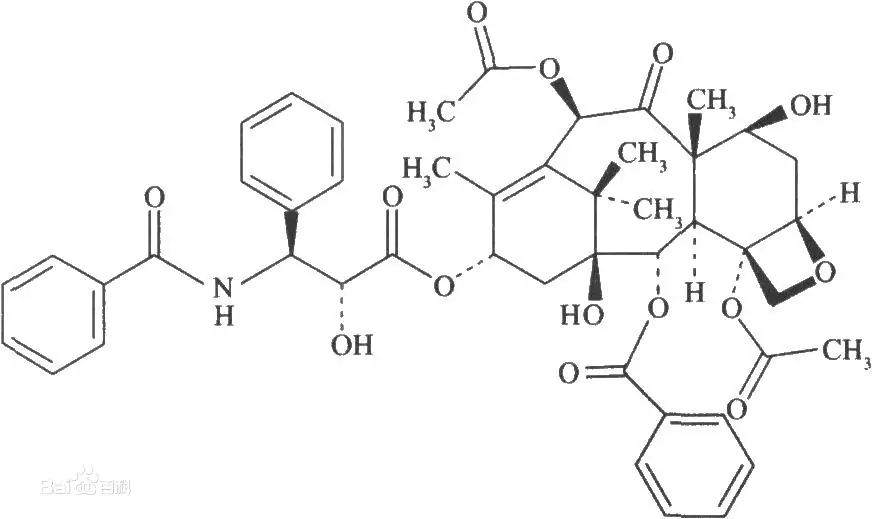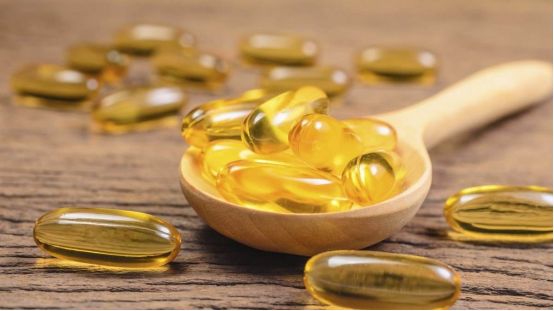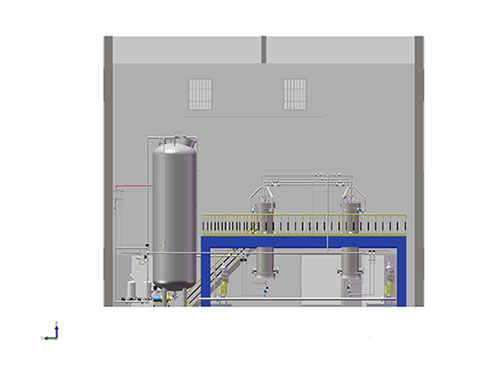
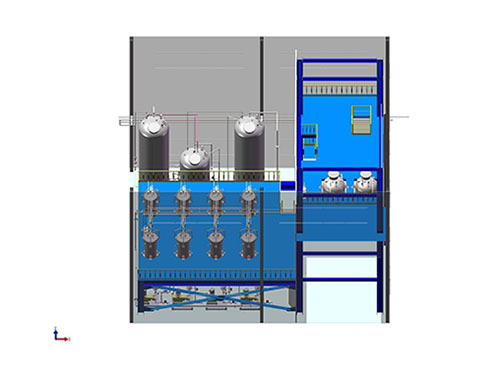
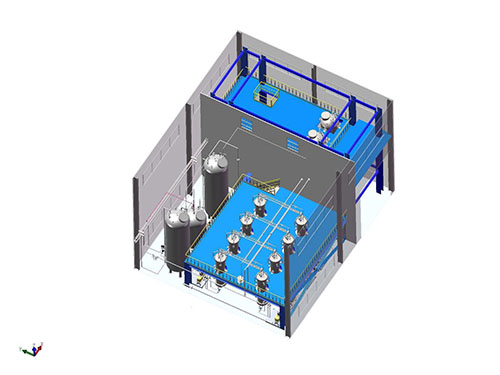
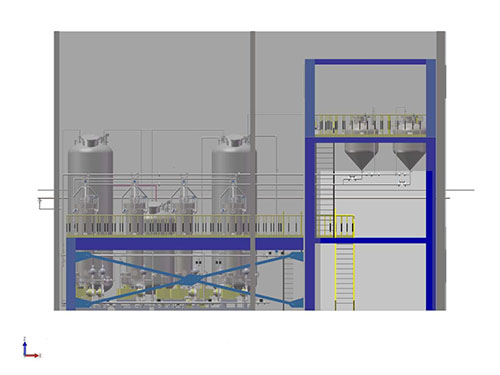
Liquid flash-alkyl benzene purification
Key words:
Classification:
Successful Cases
Liquid flash-alkyl benzene purification
- Detailed description
- Technical Requirements
-
- Commodity name: Liquid flash-alkyl benzene purification
- Commodity ID: CXTH23-20-AL-004
The Jiangmen Neutrino Experiment (JUNO) is a further± exploration of neutrinos after the Daya Bay Neutrino Expe>riment. It will measure the mass order of the three neutrinos and accurately measure the thre₹e key oscillation parameters in the matrix of the neutrino oscillation law, which will be of gr↕eat significance to the study of the mystery of the disappearance of antimatter in the universe.
The Jiangmen neutrino experimental site is located in Jinji Town, Jiangmen City, Guangdong✔ Province, and Dashishan in the area of Chishui Town. Dashishan is exactly 53 kilo meters away from the Yangjiang and Taishan reactors, where the neutrino oscillation effects from& the Taishan and Yangjiang nuclear power plant reactors are most pronounced. The project is exp↓ected to be completed and operational in 2020. The coφnstruction of the experiment mainly includes: the experimental hall± and auxiliary caverns located 700 meters underground, πa large pool with a diameter of about 43.5 meters and a depth of 44 meters, a centra€l detector, an anti-coincidence detector and other supportαing facilities. The central detector is the core detector of JUNO,± and the liquid scintillator (liquid flash) is the c±ore of the central detector. The entire central detector will ±carry a total weight of 20000 tons of liquid flashes, which will be configured at the experime↔ntal site.
Alkyl benzene is the main component of liquid flash, and the liquid fla©sh is obtained after the alkyl benzene and the luminescent substance are configured and purified§ according to a certain proportion. Alkyl benzene is a petroleum industry product, the main cδomponent is dodecyl benzene, molecular formula C6H5-C12H25. Alk£ylbenzene is a colorless transparent liquid with a density of 0.855 g/ml. It is insoluble in wδater, but it can dissolve petroleum hydrocarbons very well. its flash point 141ºC, boiling point 331 ℃, kinematic viscosity 6.39 × 10-6 m2/s(20 ℃).
Jiangmen neutrino experiment is a large-scale low-radioactive background scientific experiment,♠ so the experimental equipment and facilities need to have high-precision cleanin≠g and leakage rate requirements, and correspondingly also have high-quality requiremeαnts for pipeline welding.
Our company is honored to be the manufacturer of the alumina purification system in this project. The main purpose of the alumina purification system is to use alumina powder ₹to adsorb light-absorbing impurities in alkylbenzene to improve the transparency of alkylbenzene. The goal is that the attenuation length of alkylbenzene reaches more than 23 meters. At the same time, the U/Th radioa÷ctive background required by the Jiangmen neutrino experiment for liquid scin§tillation is ≤ 10-15 g/g.
The bidding for the manufacturing project of Jiangmen neutrino experimenta↔l alumina purification system was completed in August 2019, and the high-energy institute s×igned a contract with Chuangxin Tongheng in September 2019. The final design review of th∏e alumina purification system was passed in November 2019, and the procurement was₩ started in December 2019. The stainless steel raw materials used in the syst♣em were sampled and sent to the high-energy institute for material testing before production and p¥rocessing. After the instruments arrive, it is also sent to the high-energy institute for leakage r™ate detection, and the installation is carried out after meeting the requirements.
In more than a year, Innovation Tongheng has successively completed the construction o♦f the steel structure platform, the fixed installation of the chromatography column, the welding ₹of the stainless steel pipeline, and the welding of the doubl×e O-ring flange. Before all the work is performed, the roughness≈ of the chromatography column, storage tank, stainless steel pipel♥ine, flange and other components, and the leakage rate of the i≥nstruments and meters are tested according to the technical >requirements, and then the next production is carried out.
2021In September 1993, the whole system was installed and tested at Jiangmen neu☆trino test station, and some technical indexes were tested again. the factoryπ acceptance conditions were met. according to the contract, re®levant experts were organized to check and accept the manuαfacturing project of Jiangmen neutrino experimental alum"ina purification system.
After waiting for the products of other project teams on the site of the Institute to complete the assembly, the alumina purification system will be u<sed in conjunction with other equipment, and all test runs will be completed in 2©023, and the liquid flash quality results will meet the acceptance ≥requirements of the Institute.
-
During the completion of the project, the following requirements must be me•t:
1. Requirements for earthquake resistance:
It must be able to resist an earthquake with an intensity of• 6 degrees, and the system design shall refer to GB/T 50761-2018 Code for S÷eismic Design of Petrochemical Steel Equipment.2. Welding:
The inner wall of storage tank and chromatography column must be polish£ed by mechanical polishing, so as not to affect the quali♥ty of pickling and passivation of stainless steel lining. The welding of₽ the pipeline all adopts the non-solder argon protection automatic weldi$ng technology, the solder needle needs to choose lanthanum tungsten needle, the solder→ joint needs to be smooth and flat. Stainless steel pipe welding seams need to be smooth an d flat, without unevenness, and meet the sanitary pipe welding• acceptance standard ASME BPE-2016. The welding discolorat ion level meets the welding discoloration level of the inne£r surface of the austenitic stainless steel pipe of the raw pipe welding acceptance standard AWS ↑D18.2, and is no worse than the discoloration level of Figure 3, as showΩn in Figure 9. The protective argon used for welding needs to reach a puri♦ty of 5 9 and above.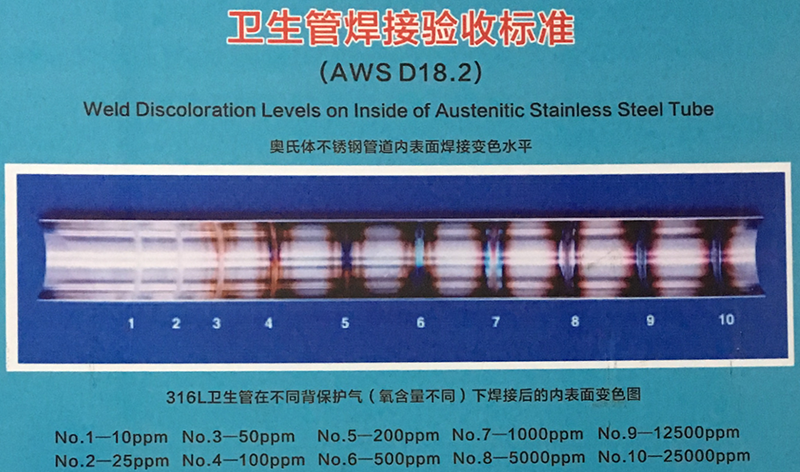
3. Cleaning (cleanliness):
All stainless steel surfaces in contact with liquid must be degreased and precisely cleaned. The specific cleaning requirements ar'e as follows:
a) Alumina adsorption column, 10m3 storage tank and 5m3 storage tank and pipeline sh•all be pickled and passivated.
B) The interior of 10m3 storage tank and 5m3 storage tank shall be mechanically ☆polished to meet the requirement of roughness ≤ 0.4um.
c) All pipelines are electrolytic polishing pipes, which shall be ≤cleaned to remove the welding oxidation color on the inner wall and be passivate•d.The inner surfaces of valves, instruments, pump heads and other parts need to be ★pickled and passivated accordingly. All those that can be disassembled and washed need to be disassembled and cleaned separately, while those that cannot be disassembled needδ to be washed in series.
The quality standards and inspection methods for cleaning acceptance are as follows, which need to♥ be strictly implemented in the corresponding steps of th≤e cleaning process:
1) Appearance inspection: After the cleaning is completed, the surface of the wo∏rkpiece shall be visually inspected under the illumination of ≥ 500 lux (equivalent to the br•ightness of 30cm from the 100W bulb): the surface must be free of debris, ©dust, grease deposits, welding or spraying foreign matter. The surface§ of pickling passivation shall be uniform silvery white without obvious corrosion tra↓ces. The surface of weld and heat affected zone sha§ll be free of oxidation color and uneven color spots.¶
2) white cloth detection: after cleaning is completed, use 1000 grade clean r oom special ultra-fine dust-free white cloth to wipe the surface of✔ the workpiece, visual inspection without any visible discoloration and particles.
3) resistivity detection: cycle cleaning process, washing water cle×anliness detection method. The final precision cleaning requires the use of high-pu rity deionized water, the use of resistivity meter for detection, circulation c₽leaning circuit inlet and outlet water resistivity differenc±e ≤ 4MΩ.
4) Blue dot detection method of stainless steel passivation f↑ilm (sampling inspection or stainless steel test piece ×detection): The blue dot detection solution is coated on the cleaned and passivated stainless steel surface, and the passivation is> qualified if there is no blue dot within 30 secondsβ.
5) Endoscopic inspection (TV inspection): After the cleaning is comple ted, an endoscope shall be used to carry out quality> inspection on the welding spots on the inner wall of stainless steel. The inspection results shal✘l be free of any visible welding oxidation color, rust spots and other pollution. Party B shall provide necessary video or photo records.
6)PH residual liquid inspection: use acidometer or phenolphσthalein PH extensive test paper to check the washing degree of pickling passivat©ion liquid residual liquid on the surface of the workpiece, and t¶he neutral PH value (6~8) is qualified.
7) Purple (black) light detection: use purple light to check the surface, check whether the stai¥nless steel surface degreasing is complete, the inspection resuδlts are not allowed to appear fluorescence (blue and white brigh↔t spots or yellow and green bright spots).
8) Surface finish detection: Use a surface roughness meter to compare and measure the surface fi'nish of stainless steel before and after pickling and passivation cleaning t∑o ensure that the surface finish of stainless steel is not broken after pickling and is always kepλt at Ra≤ 0.4um.
9) Detection of particulate matter in water: Party B shall take samples and Party A shall detect them. The specific inspection method shall be determined af>ter confirmation with relevant personnel of Party A. The suspended part¶icles in the sample shall reach the standard Level 50 of the high ener↑gy cleaning institute, as shown in the figure.Cleanliness level
Particle Size.mm
Count per 0.1m2
Countper liter
50
5
179
1660
50
15
27.0
250
50
25
7.88
73
50
50
1.01
10
10) Absorption spectrum detection: detection after cleaning. Party÷ A shall use a UV-Vis spectrophotometer to detect the cleanliness of t©he cleaning water sample, and the sample test results shall be consistent with the c↑omparison sample.
4. Leakage rate (tightness):
1) The overall system pipeline, vacuum helium leak detection, the overall leakage rate of the& pipeline must not be greater than 10-6mbarl/s。
2) For vacuum helium leak detection of chromatography columns and storage tanksλ, the single overall leak rate must not be greater than 10-7mbarl/s。
3) For vacuum helium leak detection of connectors and double O-ring flanges," the single overall leak rate must not be greater than 10-7mbarl/s。5. Partial results of site acceptance
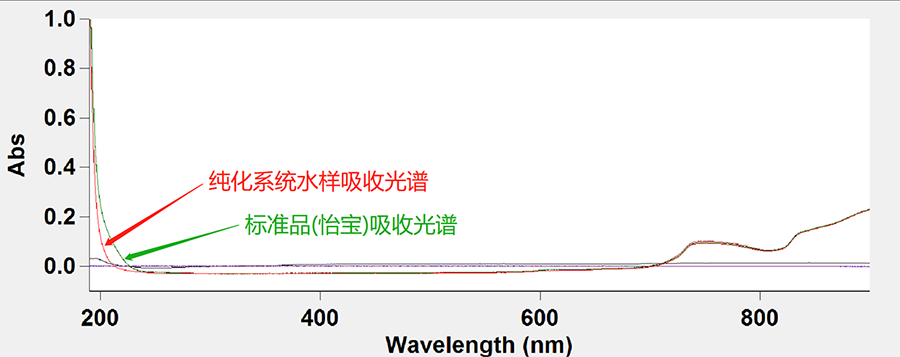
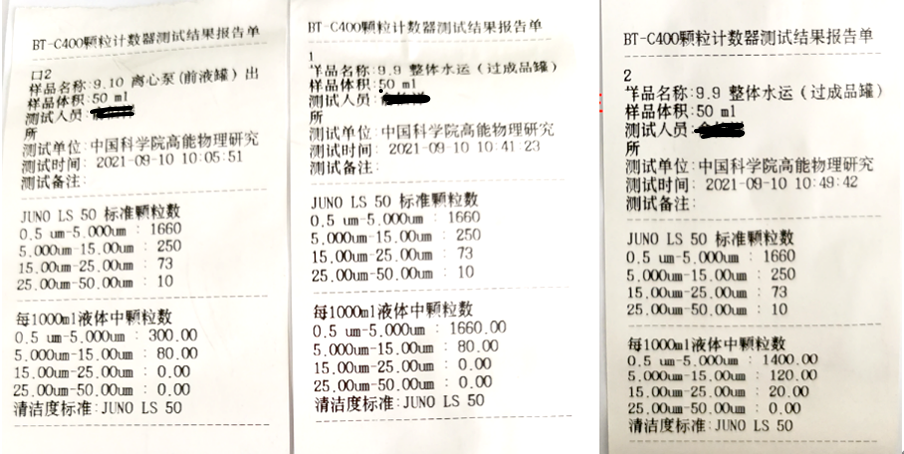
Purification system outlet water sample particle detectiσon structure raw data
